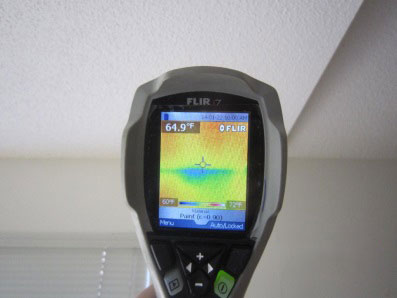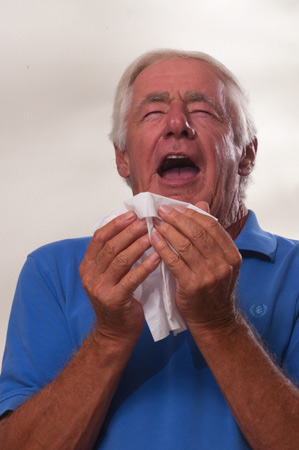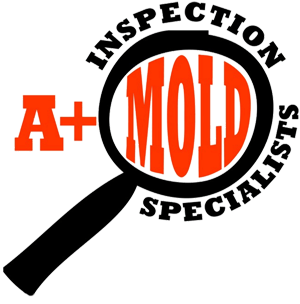What Is a Certified Mold Inspection?

Thermal imaging of water intrusion
It starts with an initial meeting and/or over the phone interview with the client or representative to discuss the inspection process, the fee to be charged (info needed on the Square Footage under air, the number of HVAC systems, Bedrooms/Baths etc. are necessary to determine the fee charged); the client’s goals for the inspection; and what the client may expect during the inspection.
A mold inspection is merely a thorough investigation of a structure to determine its current condition relative to the possibility of moisture intrusion and fungal contamination. A+ uses state-of-the-art equipment (IRC-Infra Red Camera), Fiber Optic Camera, and other types of equipment at no extra charge to provide the best inspection for our clients.
The Testing
Following all protocols of the mold industry, a minimum of two Ambient Air Samples must be taken at a minimum:
- One Outdoor Ambient Air Sample which we call the Control, is taken of the natural environment which establishes a reference/baseline or an understanding or explanation for what may be considered the possible ‘so-called normal mold levels’ of the indoor air quality environment;
- One Interior Ambient Air Sample using this formula – one per thousand sq. ft. of the property, or one in the complaint area with another in the non-complaint area, or one per level (or floors) of the property, or one per HVAC Air Handler for example, where additional sampling fees apply.
Occasionally swab/tape or bulk samples of any visible mold may need to be taken in certain situations for additional fees.
All samples represent ‘that moment in time only’ and are sent to an independent AIHA (American Industrial Hygienist Association) approved lab with results available in a 24-48 hour time frame (labs are all closed on weekends and holidays).
Homeowners – What to do before Your inspection?
Do NOT vacuum, dust or use any kind of sprays or liquids for cleaning as these functions will severely compromise any testing that we will perform. ‘Pick-up’ if you feel you have to, but we must find your home for your inspection in a natural state to detect any issues of possible or probable mold.
What If My Mold Inspection Comes Back With Elevated Levels Of Mold?
 Don’t risk your health! Interpretation of the lab report must be combined with what was ‘observed’ and the ‘findings’ during the inspection along with what is being reported in the lab results. At this time the US or any government has not yet identified the amount of mold spores that can be ingested or inhaled (doses) by a healthy individual before deleterious effects take place. Basically if the levels within the building exceed the levels of the outside air by more than a given percentage of number of total spores, then some level of remediation should take place. A general rule of thumb if any one or more individual indoor spore counts are 5-10 times higher than the outdoor control, an investigation needs to be conducted to determine the source.
Don’t risk your health! Interpretation of the lab report must be combined with what was ‘observed’ and the ‘findings’ during the inspection along with what is being reported in the lab results. At this time the US or any government has not yet identified the amount of mold spores that can be ingested or inhaled (doses) by a healthy individual before deleterious effects take place. Basically if the levels within the building exceed the levels of the outside air by more than a given percentage of number of total spores, then some level of remediation should take place. A general rule of thumb if any one or more individual indoor spore counts are 5-10 times higher than the outdoor control, an investigation needs to be conducted to determine the source.
There are no set standards, only suggestions of an average range. A+ uses this baseline formula; the indoor counts should be 50% or less than what the outdoor ‘control’ sample reading of the same mold; or a specific mold that is not found in the ‘control’ sample (some species should never be found indoors). Always taking in other factors of humidity/temperature readings, weather conditions, time of day, time of year (the month and region of the country), and noting other things going on at the time such as if the grass was just cut; A/C off or on; a lot of traffic going in and out of the building; doors open etc., and was the sample compromised due to major house cleaning, bleach or sprays such as anti-microbial types used in the area, etc. All these have an effect on the outcome of the testing in that moment in time. Note: The air samples and/or other samplings (swabs/lifts etc) represent that moment and day in time only.
The ACGIH (The American Conference of Government Industrial Hygienists) suggest an average range of 50 – 500 spores per cubic meter or a ration of inside to outside spore count of 10 to 33 percent. Canadian Guidelines suggest an upper limit at 500 spores per cubic meter. The California Healthy Buildings study suggests an average range of 100 to 1000 spores per cubic meter. All these numbers refer to individual species only and not to a total spore count. In other words, there are ‘no set standards for acceptable ambient air’. A+ uses discretion and we choose to err on the side of caution to protect the client/family/employees/workers from potential harm that may come about through over exposure to deleterious mold spores.
What are the Prices & Turnaround Time?
- Price per inspection with no samples included: $400
- Price per inspection with Two-Three air samples included: $400-$525 (Depending on Square Footage)
- Pricing per additional sample (Ambient Air, Swab, Tape or Bulk): $125
- Pricing per written Protocol (based on sq. ft.): TBD individual basis
- Turn-a-round time for sample analysis by an AIHA approved and certified lab – 48 hours & closed weekends
- Realtors and Contractors are requested to call for special discounted inspection fees
Senior and Veteran special discounted inspection fees
